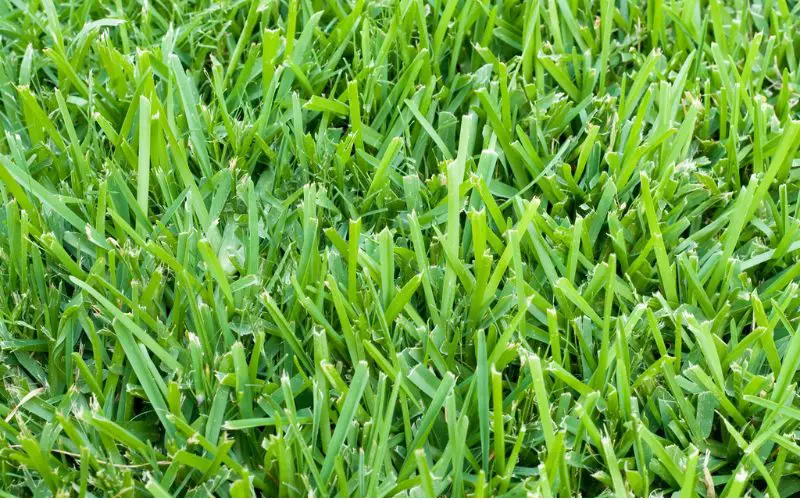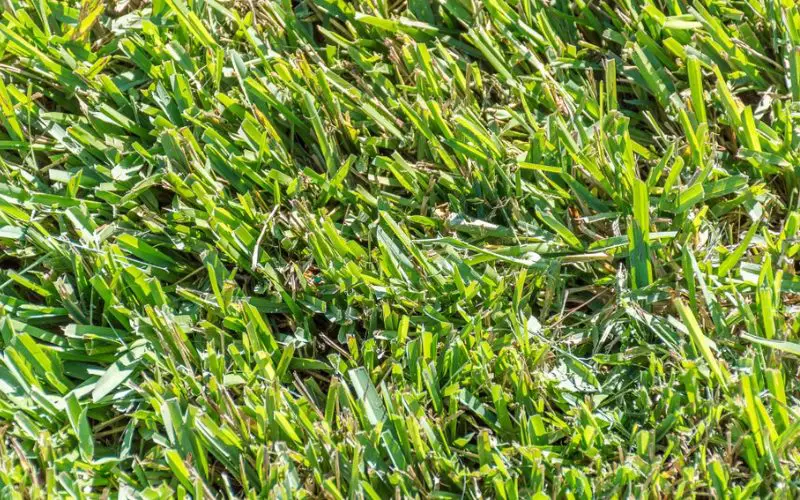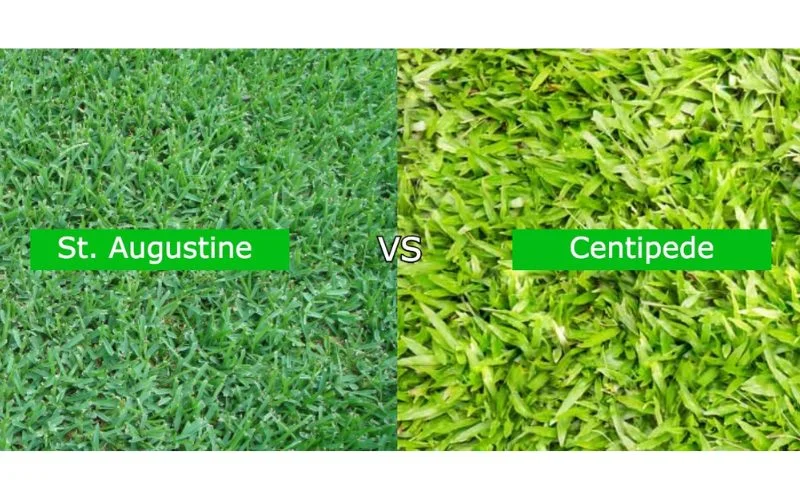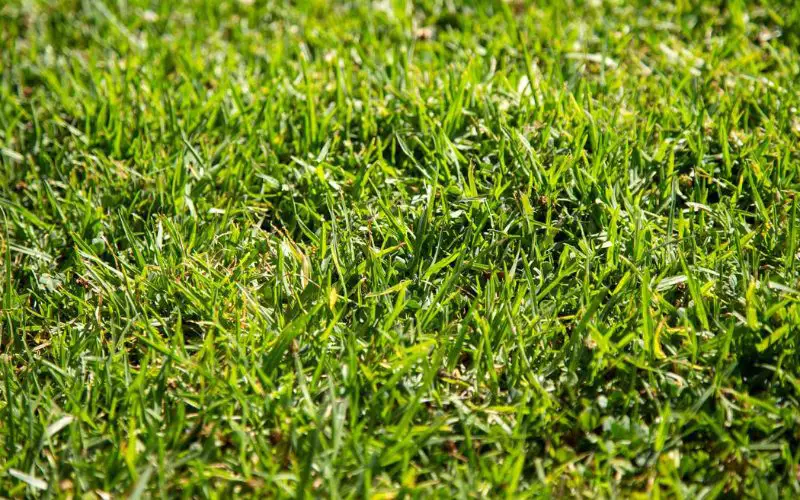In the topics, if you talk of 2 of the most popular turf you find on people’s lawns, it will most likely be St Augustine and Centipede grass; this is not such a surprise because they are very durable grasses that can beautifully accentuate any landscape.
These two kinds of grass have become the grass of choice for most people, and sometimes many mistakes one for the other.
Both St Augustine and Centipede grass thrive in the tropics, are low-growing, and have similar leaf shapes and blades, but they also have differences, especially with regards to their color, which are different shades of green, the care, and the number of varieties that each grass has varied, (by the way, St Augustine has more varieties)
About St Augustine Grass

St Augustine grass, whose botanical name is Stenotaphrum secundatum, is a warm-weather grass with flat stems and broad, coarse leaves.
The grass has bright blue-green characteristics, and when planted, they quickly get established and form a dense turf whose root system is strict and hence can easily choke out weeds from the lawn.
This grass, which thrives in temperatures between 80 to 100 degrees Fahrenheit, does well in zones 8 to 10 and is also resistant to salty soil. St Augustine grass, however, has one downside, and that is the fact that they turn brown and go dormant in cold months.
St Augustine grass is best established from sod or plugs instead of seeds, and caring for it is easy; all it requires is an inch of water every week to remain lush; exceeding that amount could cause fungus to develop because it leaves the soil damp.
Over-watering the grass can also cause it to become brown. Regular fertilizer application is required throughout the growing season so that grass can remain dense.
Types of St. Augustine Grass
St Augustine grass has different cultivars, and some of them include:
Bitter-blue is a St Augustine cultivar with a dark blue-green color fine and dense texture. It is relatively more resistant to cold, shade, scorching weather, and salty soil.
Its mowing height should be 3 or 4 inches. This grass is highly susceptible to the cinch bug and has a low tolerance for weed killers like atrazine.
- Palmetto
This semi-dwarf St Augustine cultivar makes a lawn look lush because of its lighter color and texture than the bitter blue cultivar. This grass is cold, drought, and shade tolerant but goes into dormancy if there is a hard frost.
- Floratum
This cultivar was bred specifically for its resistance to the SAD virus and chinch bug. It has proven ineffective as a Cinch tolerant variety.
This cultivar has a large, purplish-red color of their stolons with internodes of approximately 3 inches in length. It is, however, not that resistant to cold.
About Centipede Grass

Centipede grass, known scientifically as Eremochloa ophiuroids, is another grass for those in warm temperatures because it is heat-tolerant.
This attractive grass is a low-maintenance turf that thrives in slightly acidic soils but does not do well in alkaline soil.
This grass has a light green color and a coarse texture with pointed tips. It has shallow roots and spreads in the ground by above-ground stolons.
It tends to turn brown and even die under heavy foot traffic, and it is sometimes referred to as “the lazy man’s grass” because it grows slowly, which means you have less mowing.
Centipede grass does well under full sun or half shade but never under heavy shade, or it will die. It thrives in the hardiness zones 7 to 9 and does not do well in cooler winters or drought conditions.
Centipede Grass Decline
It is one phenomenon about centipedes that needs to be clearly understood. Sometimes, centipede grass, three years and older, starts developing yellow patches and then becomes weak. It might be a natural occurrence or a problem with lawn maintenance. No one can say.
Centipede decline is expected in lawns with a heavy thatch buildup, inadequate water, and a mowing height of fewer than 2 inches.
The way to manage this problem is to conduct a soil test to determine the problem and employ excellent maintenance culture.
St Augustine Grass vs. Centipede Grass

St Augustine and Centipede grass are two types of grass with a lot in common but have different points. Here is a comparison of the similarities and contrasts between the two kinds of grass:
Their Appearance
St Augustine and Centipede grass look alike when you see the lawn they are planted, but a keen look will show some different areas.
Centipede grass has a bright green color, and it has long, above-ground stolons that produce many upright grass blades. The many blades of grass from this stolon resemble the insect centipede, which is why the name of the grass was so coined. The blades of the grass are rough, short, and flat.
Sometimes the light green color of centipede grass is problematic for some people; hence, they overfeed the grass with fertilizer to give it a richer green color. Even though the color of the grass might improve, it leads to a die-back of the grass in the next season.
On the other hand, St. Augustine grass has a beautiful deep green color which is one of the reasons many people love it. The grass has broader leaves, just like centipede grass, and they are coarse too. Their blades are thick and round at the top and compacted toward the roots.
This low-growing grass spreads by stolons and forms a very deep and dense turf because of how thick the blade of the grass is. When this grass does not receive enough water, the blades become sharp around the edges, and when it is touched, it gives an unpleasant feeling.
Their Use Of Resources
Since both St Augustine and Centipede grass love the warm climate, they are used chiefly on lawns in the tropics, where they get a lot of sun, heat, and less water. St Augustine grass is an invasive grass that can take up more resources, including nutrients and water, than it needs; this is why it gets established quickly because of its ability to out-compete other grasses and weeds.
Centipede grass is considered non-invasive, and hence it is grass that you can plant around trees, flowerbeds, and bushes without fear of it taking up most of the resources in the soil.
This grass uses just the right amount of nutrients, water, and even space from the soil to survive. Unlike St Augustine grass, it only takes up more resources than it needs.
Once centipede grass has been established, it can comfortably live with other plants without competing for resources.
Their Best Soil Type
St Augustine and Centipede grass do well in slightly acidic to neutral soil, but the best pH for St Augustine grass is 6 to 7, while that of Centipede grass is 5 to 6. At a pH value of more than 7, these two types of grass experience stunted growth and become less durable.
While many types of grass die in some poor soils, like sandy and dry soils, this is different with St Augustine and Centipede grass. They can grow in impoverished soils as the soil has no high pH.
Their Water Needs
St Augustine and Centipede grass require an inch of water every week to remain dense and lush and maintain their texture; it is pretty challenging to overwater these two types of grass, especially if the soil they are planted on is well drained.
St Augustine and Centipede grass differ in how they deal with excess water. Because of the invasive nature of St Augustine grass, it will take in all the excess water it gets. Sometimes, it can take and disperse as much as four times its actual water needs.
Centipede grass, on the other hand, will not absorb more water than it needs, which is one of the reasons it is not an invasive grass.
Their Climatic Requirements
St Augustine grass and Centipede grass need full sun to grow well; the former can still thrive in partial shade but not exceed 6 hours.
St Augustine can endure cold weather up to 55 degrees Fahrenheit. Still, anything less than that, the grass goes into dormancy, and it will eventually come out of dormancy while experiencing little or no damage at all.
Centipede, on its part, is a warm weather plant that is not heat tolerant; hence is grown in places that do not have freezing weather.
Because this grass does not experience proper dormancy, it usually gets damaged at temperatures less than 50 degrees Fahrenheit.
Their Durability
St Augustine grass is not precisely very durable compared to others; when it is damaged, it takes a lot of time to recover. However, one of its merits is that disruption of the roots, like digging, hardly damages the grass.
While St Augustine grass scores are relatively low in terms of durability, Centipede grass fares even worse. It is not durable, and it is difficult for the grass to survive once it is damaged.
As a stolon of centipede grass gets damaged, a small area of the lawn might die, which means it has to be reseeded.
Their Pests And Diseases
St. Augustine and centipede grass are susceptible to different pests, including insects like grubs and thrips; they can also suffer from other fungal infections like white fungal balls, especially if they are constantly overwatered or left in deep mud or standing water.
St. Augustine grass suffers from chinch bug infestations, a pest many types of grass deal with; however, Centipede grass is not susceptible to the bug.
Another pest that these two kinds of grass respond differently to is digging pests. While digging pests have little or no effect on the St. Augustine lawn, they can easily affect Centipede grass.
Their Mowing Needs
It is best to mow St Augustine grass to a height of 2 to 2. 5 inches, and it should be dethatched once every other year.
On the other hand, Centipede grass lawns should be mown very short, down to a height of 1 inch, and only be mowed some of the time. Centipede grass needs dethatching more frequently than St Augustine lawn, which you should do about twice yearly.
Conclusion
You can only talk of the grasses of the tropics if you mention St Augustine and Centipede grass, and this is because they are amongst the dense grass that is resistant to the weather.
Helpful Links:
- How many Heads of Broccoli Per Plant
- How to Plant a Pineapple Head
- Can you Plant a Sunflower Head
- What is the Best Ground Cover for Under Pine Trees?
- How many Heads of Cauliflower Per Plant
These two types of grass share a lot in common, especially regarding their climatic requirements. Still, they also differ in how they use resources and the pests and diseases they are susceptible to.
Follow us on Facebook, Instagram, and Pinterest for more updates.

